Hedge funds cut NFLX, keep big bets on MSFT, AMZN, add NVDA
Introduction & Market Context
Whitehawk Therapeutics, formerly known as AADI Bioscience, unveiled its strategic transformation in a corporate presentation dated May 2025. The company has pivoted from its previous focus on mTOR inhibition and rare cancer indications to become an antibody-drug conjugate (ADC) focused company. This transition follows AADI becoming a wholly owned subsidiary of Kaken, marking a significant shift in the company’s therapeutic approach and target market.
The rebranding comes at a time when ADCs are gaining significant traction in oncology, with several next-generation platforms demonstrating improved efficacy over first-generation technologies. Whitehawk’s stock (NASDAQ:WHWK) closed at $1.67 on May 13, 2025, with a 52-week range of $1.21 to $3.81, indicating investor interest but also volatility as the company executes this strategic pivot.
Executive Summary
Whitehawk’s presentation outlines a focused strategy centered on three ADC candidates targeting clinically validated tumor antigens. The company is leveraging an advanced ADC platform technology engineered to improve therapeutic index through proprietary TOPO1 inhibitor payloads, highly stable cleavable linkers, and optimized drug-antibody ratios (DAR).
As shown in the following overview of Whitehawk’s portfolio and ADC technology platform:
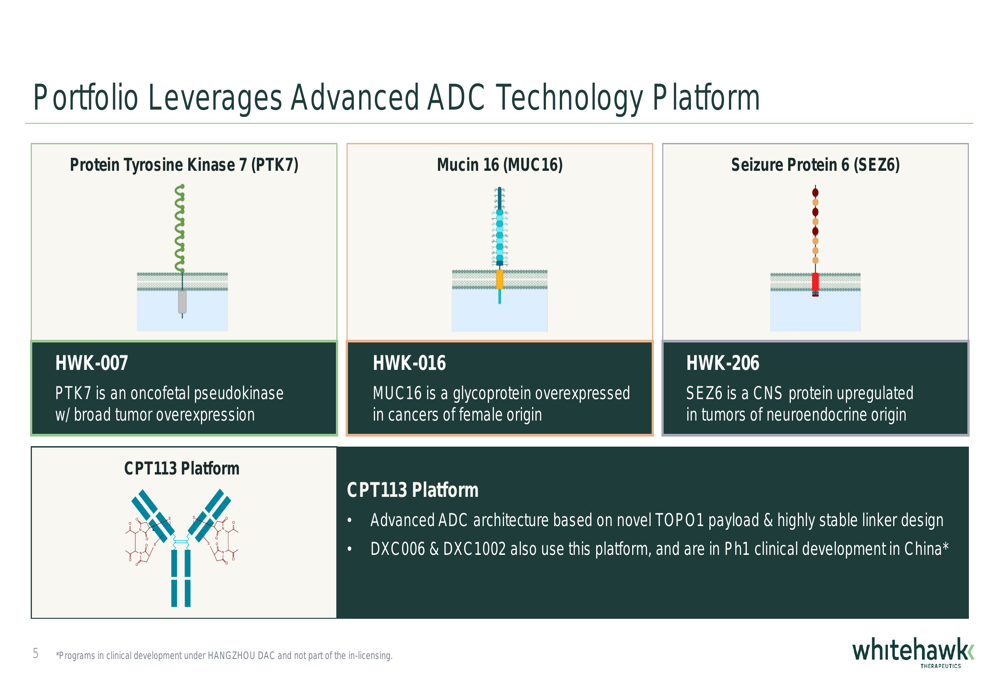
The company’s three lead candidates target different cancer-associated proteins: HWK-007 targeting Protein Tyrosine Kinase 7 (PTK7), HWK-016 targeting Mucin 16 (MUC16), and HWK-206 targeting Seizure Protein 6 (SEZ6). Each candidate is being developed for specific cancer indications with significant patient populations, including non-small cell lung cancer (NSCLC), ovarian cancer, and small cell lung cancer (SCLC).
Strategic Initiatives
Whitehawk’s strategic focus on ADC development is built around addressing limitations of first-generation ADCs. The company’s platform is designed to improve the therapeutic index - the ratio between effective dose and toxic dose - through several technological enhancements.
The following slide illustrates how the company’s ADC platform is engineered to improve therapeutic outcomes:

According to the presentation, switching to advanced ADC platform technology has demonstrated significant efficacy gains across multiple targets. For example, improvements in overall response rates (ORR) range from +16 percentage points for B7H4-targeting ADCs in triple-negative breast cancer to +45 percentage points for HER2-targeting ADCs in HER2+ breast cancer.
Whitehawk positions itself as an execution-focused company with a clear development timeline. The presentation outlines plans to bring all three assets to Investigational New Drug (IND) applications by mid-2026, targeting cancer indications with substantial patient populations.
The development timeline for all three assets is illustrated in this comprehensive roadmap:
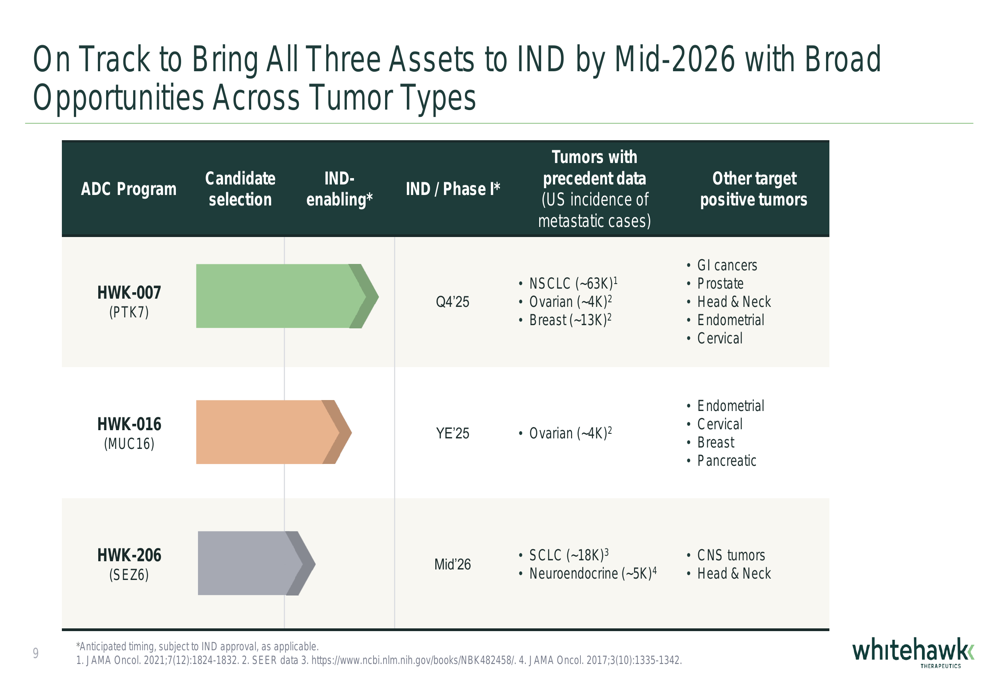
Detailed Analysis
HWK-007 (PTK7-Targeting ADC)
HWK-007 targets PTK7, an oncofetal pseudokinase that is overexpressed across a broad spectrum of cancers. The target has been clinically validated by Pfizer (NYSE:PFE)’s first-generation ADC, which demonstrated response rates of 16-27% across all patients and 23-46% in patients with moderate-to-high PTK7 expression.
The following image shows PTK7 expression across various solid tumors, highlighting the potential breadth of application:
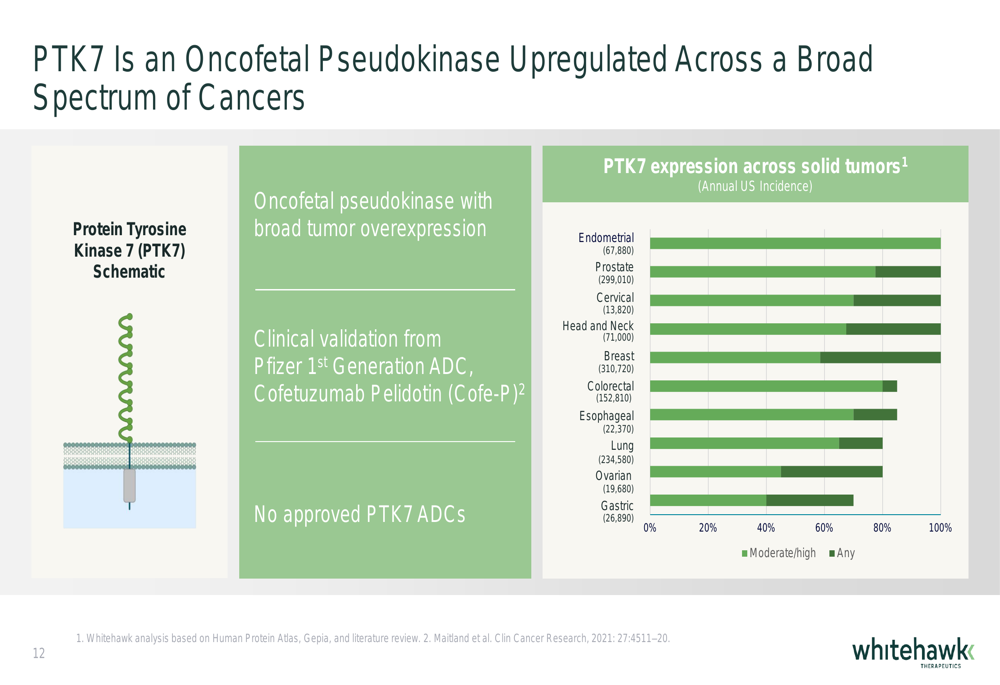
Whitehawk claims HWK-007 has the potential to significantly outperform current efficacy benchmarks, projecting possible improvements in ORR from 44% to nearly 70% in platinum-resistant ovarian cancer and from 20% to 55% in NSCLC. The company plans to initiate Phase 1 trials in NSCLC and platinum-resistant ovarian cancer, with IND submission targeted for Q4 2025.
HWK-016 (MUC16-Targeting ADC)
HWK-016 targets MUC16, a glycoprotein highly expressed in cancers affecting women. Previous attempts to target MUC16 with first-generation ADCs faced challenges due to an "antigen sink" effect, where shed MUC16 (known as CA125) in circulation binds to ADCs and prevents them from reaching tumor cells.
The expression profile of MUC16 across tumor types is shown in the following visualization:
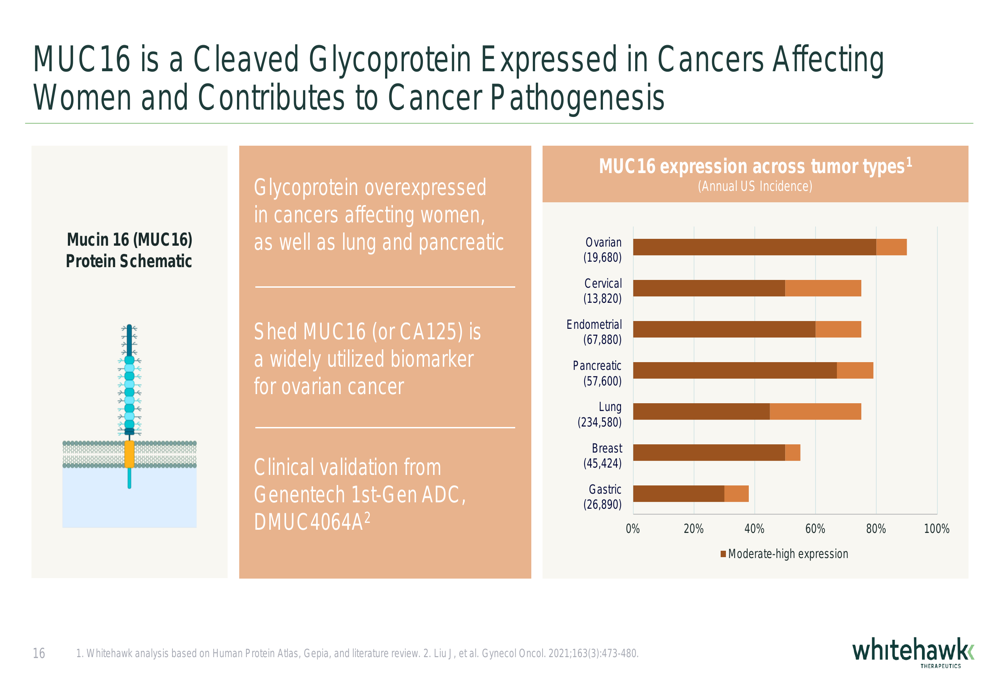
Whitehawk’s approach with HWK-016 is to directly target non-shed MUC16, potentially overcoming the limitations of previous MUC16-directed therapies. The company plans to submit an IND by the end of 2025, with initial Phase 1 trials focused on ovarian cancer.
HWK-206 (SEZ6-Targeting ADC)
HWK-206 targets SEZ6, a CNS-limited protein that is overexpressed in SCLC, other neuroendocrine neoplasms, and CNS tumors. This target has shown promise with AbbVie (NYSE:ABBV)’s next-wave ADC ABBV-706, which demonstrated a 60.9% ORR in SCLC in early Phase 1 studies.
The following image illustrates SEZ6 expression across tumor types:
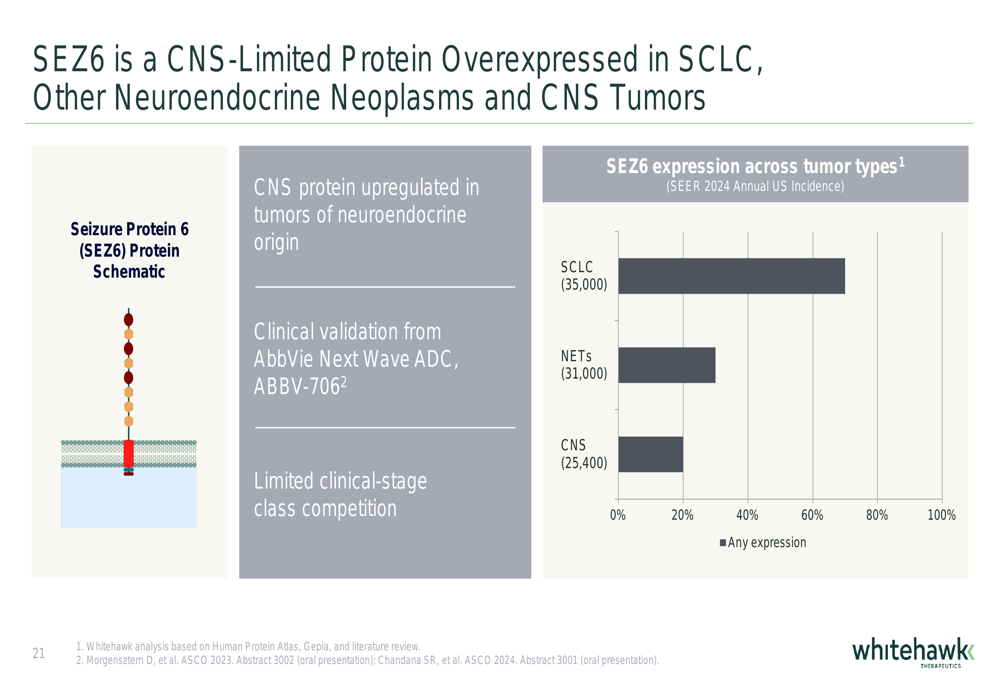
Whitehawk’s HWK-206 employs a biparatopic approach, using two different binding domains to improve binding and internalization. This approach aims to enhance efficacy beyond what has been observed with existing SEZ6-directed ADCs. The company plans to submit an IND by mid-2026.
Forward-Looking Statements
Whitehawk projects a rapid advancement of its pipeline, with all three assets expected to reach IND stage by mid-2026. The company is targeting indications with significant patient populations, including approximately 63,000 NSCLC patients, 4,000 ovarian cancer patients, 18,000 SCLC patients, and 5,000 neuroendocrine tumor patients annually in the US.
The company’s positioning and potential impact for patients is summarized in this forward-looking overview:
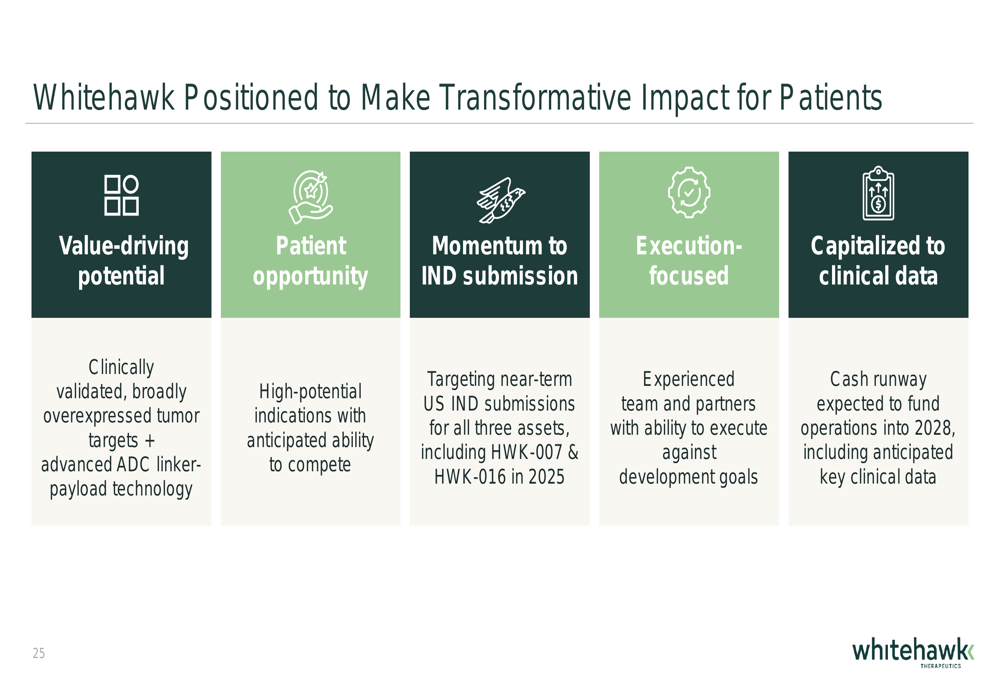
Market Context
This strategic pivot represents a significant change from Whitehawk’s previous incarnation as AADI Bioscience. In its Q2 2024 earnings report as AADI, the company reported $6.2 million in FYARRO product sales, a 15% increase from Q1, and had $78.6 million in cash, providing runway into Q4 2025. This financial position appears designed to support the company through the planned IND submissions for its three ADC candidates.
The transformation into an ADC-focused company positions Whitehawk in a competitive but rapidly growing segment of oncology therapeutics. ADCs have gained significant traction in recent years, with several approvals and major pharmaceutical companies investing heavily in the space. Whitehawk’s success will depend on its ability to demonstrate differentiated efficacy and safety profiles for its candidates compared to both existing therapies and other ADCs in development.
As Whitehawk executes this strategic pivot, investors will be watching closely for progress on IND submissions and eventual clinical data that could validate the company’s approach to ADC development.
Full presentation:
This article was generated with the support of AI and reviewed by an editor. For more information see our T&C.
